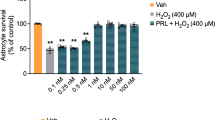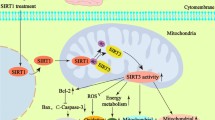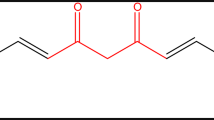Abstract
Plasminogen activator inhibitor-1 (PAI-1) is an endogenous inhibitor of tissue plasminogen activator (tPA) that acts as a neuromodulator in various neurophysiological and pathological conditions. Several researchers including us reported the induction of PAI-1 during inflammatory condition; however, the mechanism regulating PAI-1 induction is not yet clear. In this study, we investigated the role of non-receptor tyrosine kinase Fyn in the regulation of lipopolysaccharide (LPS)-induced upregulation of PAI-1 in rat primary astrocyte. The activation of toll-like receptor 4 (TLR4) signaling, induced by its ligand LPS, stimulated a physical interaction between TLR4 and Fyn along with phosphorylation of tyrosine residue in both molecules as determined by co-immunoprecipitation experiments. Immunofluorescence staining also showed increased co-localization of TLR4-Fyn on cultured rat primary astrocytes after LPS treatment. The increased TRLR4-Fyn interaction induced expression of PAI-1 through the activation of PI3k/Akt/NFĸB pathway. Treatment with Src kinase inhibitor (PP2) or transfection of Fyn small interfering RNA (siRNA) into cultured rat primary astrocytes inhibited phosphorylation of tyrosine residue of TLR4 and blocked the interaction between TLR4 and Fyn resulting to the inhibition of LPS-induced expression of PAI-1. The activation of PI3K/Akt/NFĸB signaling cascades was also inhibited by Fyn knockdown in rat primary astrocytes. The induction of PAI-1 in rat primary astrocytes, which resulted in downregulation of tPA activity in culture supernatants, inhibited neurite outgrowth in cultured rat primary cortical neuron. The inhibition of neurite extension was prevented by PP2 or Fyn siRNA treatment in rat primary astrocytes. These results suggest the critical physiological role of TRL4-Fyn interaction in the modulation of PAI-1-tPA axis in astrocytes during neuroinflammatory responses such as ischemia/reperfusion injuries.










Similar content being viewed by others
References
Trudler D, Farfara D, Frenkel D (2010) Toll-like receptors expression and signaling in glia cells in neuro-amyloidogenic diseases: towards future therapeutic application. Mediat Inflamm. doi:10.1155/2010/497987
Gorina R, Font-Nieves M, Marquez-Kisinousky L, Santalucia T, Planas AM (2011) Astrocyte TLR4 activation induces a proinflammatory environment through the interplay between MyD88-dependent NFkappaB signaling, MAPK, and Jak1/Stat1 pathways. Glia 59(2):242–255. doi:10.1002/glia.21094
Arumugam TV, Okun E, Tang SC, Thundyil J, Taylor SM, Woodruff TM (2009) Toll-like receptors in ischemia-reperfusion injury. Shock 32(1):4–16. doi:10.1097/SHK.0b013e318193e333
Hyakkoku K, Hamanaka J, Tsuruma K, Shimazawa M, Tanaka H, Uematsu S, Akira S, Inagaki N, Nagai H, Hara H (2010) Toll-like receptor 4 (TLR4), but not TLR3 or TLR9, knock-out mice have neuroprotective effects against focal cerebral ischemia. Neuroscience 171(1):258–267. doi:10.1016/j.neuroscience.2010.08.054
Chamorro A, Meisel A, Planas AM, Urra X, van de Beek D, Veltkamp R (2012) The immunology of acute stroke. Nat Rev Neurol 8(7):401–410. doi:10.1038/nrneurol.2012.98
Liu Y, Walter S, Stagi M, Cherny D, Letiembre M, Schulz-Schaeffer W, Heine H, Penke B, Neumann H, Fassbender K (2005) LPS receptor (CD14): a receptor for phagocytosis of Alzheimer’s amyloid peptide. Brain J Neurol 128(Pt 8):1778–1789. doi:10.1093/brain/awh531
Walter S, Letiembre M, Liu Y, Heine H, Penke B, Hao W, Bode B, Manietta N, Walter J, Schulz-Schuffer W, Fassbender K (2007) Role of the toll-like receptor 4 in neuroinflammation in Alzheimer’s disease. Cell Physiol Biochem Int J Exp Cell Physiol Biochem Pharmacol 20(6):947–956. doi:10.1159/000110455
Mayo L, Quintana FJ, Weiner HL (2012) The innate immune system in demyelinating disease. Immunol Rev 248(1):170–187. doi:10.1111/j.1600-065X.2012.01135.x
Medvedev AE, Piao W, Shoenfelt J, Rhee SH, Chen H, Basu S, Wahl LM, Fenton MJ, Vogel SN (2007) Role of TLR4 tyrosine phosphorylation in signal transduction and endotoxin tolerance. J Biol Chem 282(22):16042–16053. doi:10.1074/jbc.M606781200
Brown J, Wang H, Hajishengallis GN, Martin M (2011) TLR-signaling networks: an integration of adaptor molecules, kinases, and cross-talk. J Dent Res 90(4):417–427. doi:10.1177/0022034510381264
Ma Y, He M, Qiang L (2013) Exercise therapy downregulates the overexpression of TLR4, TLR2, MyD88 and NF-kappaB after cerebral ischemia in rats. Int J Mol Sci 14(2):3718–3733. doi:10.3390/ijms14023718
Kenny EF, O’Neill LA (2008) Signalling adaptors used by Toll-like receptors: an update. Cytokine 43(3):342–349. doi:10.1016/j.cyto.2008.07.010
Rivest S (2003) Molecular insights on the cerebral innate immune system. Brain Behav Immun 17(1):13–19
Rossol M, Heine H, Meusch U, Quandt D, Klein C, Sweet MJ, Hauschildt S (2011) LPS-induced cytokine production in human monocytes and macrophages. Crit Rev Immunol 31(5):379–446
Roskoski R Jr (2004) Src protein-tyrosine kinase structure and regulation. Biochem Biophys Res Commun 324(4):1155–1164. doi:10.1016/j.bbrc.2004.09.171
Guha M, Mackman N (2001) LPS induction of gene expression in human monocytes. Cell Signal 13(2):85–94
Chen YJ, Hsieh MY, Chang MY, Chen HC, Jan MS, Maa MC, Leu TH (2012) Eps8 protein facilitates phagocytosis by increasing TLR4-MyD88 protein interaction in lipopolysaccharide-stimulated macrophages. J Biol Chem 287(22):18806–18819. doi:10.1074/jbc.M112.340935
Krady JK, Basu A, Levison SW, Milner RJ (2002) Differential expression of protein tyrosine kinase genes during microglial activation. Glia 40(1):11–24. doi:10.1002/glia.10101
Smolinska MJ, Page TH, Urbaniak AM, Mutch BE, Horwood NJ (2011) Hck tyrosine kinase regulates TLR4-induced TNF and IL-6 production via AP-1. J Immunol 187(11):6043–6051. doi:10.4049/jimmunol.1100967
Gong P, Angelini DJ, Yang S, Xia G, Cross AS, Mann D, Bannerman DD, Vogel SN, Goldblum SE (2008) TLR4 signaling is coupled to SRC family kinase activation, tyrosine phosphorylation of zonula adherens proteins, and opening of the paracellular pathway in human lung microvascular endothelia. J Biol Chem 283(19):13437–13449. doi:10.1074/jbc.M707986200
Liu A, Gong P, Hyun SW, Wang KZ, Cates EA, Perkins D, Bannerman DD, Puche AC, Toshchakov VY, Fang S, Auron PE, Vogel SN, Goldblum SE (2012) TRAF6 protein couples toll-like receptor 4 signaling to Src family kinase activation and opening of paracellular pathway in human lung microvascular endothelia. J Biol Chem 287(20):16132–16145. doi:10.1074/jbc.M111.310102
Groveman BR, Feng S, Fang XQ, Pflueger M, Lin SX, Bienkiewicz EA, Yu X (2012) The regulation of N-methyl-D-aspartate receptors by Src kinase. FEBS J 279(1):20–28. doi:10.1111/j.1742-4658.2011.08413.x
Trepanier CH, Jackson MF, MacDonald JF (2012) Regulation of NMDA receptors by the tyrosine kinase Fyn. FEBS J 279(1):12–19. doi:10.1111/j.1742-4658.2011.08391.x
Braithwaite SP, Paul S, Nairn AC, Lombroso PJ (2006) Synaptic plasticity: one STEP at a time. Trends Neurosci 29(8):452–458. doi:10.1016/j.tins.2006.06.007
Higgins PJ (2006) The TGF-beta1/upstream stimulatory factor-regulated PAI-1 gene: potential involvement and a therapeutic target in Alzheimer’s disease. J Biomed Biotechnol 2006(3):15792. doi:10.1155/JBB/2006/15792
Kim JW, Lee SH, Ko HM, Kwon KJ, Cho KS, Choi CS, Park JH, Kim HY, Lee J, Han SH, Ignarro LJ, Cheong JH, Kim WK, Shin CY (2011) Biphasic regulation of tissue plasminogen activator activity in ischemic rat brain and in cultured neural cells: essential role of astrocyte-derived plasminogen activator inhibitor-1. Neurochem Int 58(3):423–433. doi:10.1016/j.neuint.2010.12.020
Akhter H, Katre A, Li L, Liu X, Liu RM (2011) Therapeutic potential and anti-amyloidosis mechanisms of tert-butylhydroquinone for Alzheimer’s disease. J Alzheimers Dis: JAD 26(4):767–778. doi:10.3233/JAD-2011-110512
Liu RM, van Groen T, Katre A, Cao D, Kadisha I, Ballinger C, Wang L, Carroll SL, Li L (2011) Knockout of plasminogen activator inhibitor 1 gene reduces amyloid beta peptide burden in a mouse model of Alzheimer’s disease. Neurobiol Aging 32(6):1079–1089. doi:10.1016/j.neurobiolaging.2009.06.003
Jeon H, Kim JH, Kim JH, Lee WH, Lee MS, Suk K (2012) Plasminogen activator inhibitor type 1 regulates microglial motility and phagocytic activity. J Neuroinflammation 9:149. doi:10.1186/1742-2094-9-149
Lampron A, Elali A, Rivest S (2013) Innate immunity in the CNS: redefining the relationship between the CNS and its environment. Neuron 78(2):214–232. doi:10.1016/j.neuron.2013.04.005
Xin H, Li Y, Shen LH, Liu X, Hozeska-Solgot A, Zhang RL, Zhang ZG, Chopp M (2011) Multipotent mesenchymal stromal cells increase tPA expression and concomitantly decrease PAI-1 expression in astrocytes through the sonic hedgehog signaling pathway after stroke (in vitro study). J Cereb Blood Flow Metab Off J Int Soc Cereb Blood Flow Metab 31(11):2181–2188. doi:10.1038/jcbfm.2011.116
Xin H, Li Y, Shen LH, Liu X, Wang X, Zhang J, Pourabdollah-Nejad DS, Zhang C, Zhang L, Jiang H, Zhang ZG, Chopp M (2010) Increasing tPA activity in astrocytes induced by multipotent mesenchymal stromal cells facilitate neurite outgrowth after stroke in the mouse. PLoS One 5(2):e9027. doi:10.1371/journal.pone.0009027
Melchor JP, Strickland S (2005) Tissue plasminogen activator in central nervous system physiology and pathology. Thromb Haemost 93(4):655–660. doi:10.1267/THRO05040655
Lee SH, Ko HM, Kwon KJ, Lee J, Han SH, Han DW, Cheong JH, Ryu JH, Shin CY (2014) tPA regulates neurite outgrowth by phosphorylation of LRP5/6 in neural progenitor cells. Mol Neurobiol 49(1):199–215. doi:10.1007/s12035-013-8511-x
Pang PT, Lu B (2004) Regulation of late-phase LTP and long-term memory in normal and aging hippocampus: role of secreted proteins tPA and BDNF. Ageing Res Rev 3(4):407–430. doi:10.1016/j.arr.2004.07.002
Harris-White ME, Frautschy SA (2005) Low density lipoprotein receptor-related proteins (LRPs), Alzheimer’s and cognition. Curr Drug Targets CNS Neurol Disord 4(5):469–480
Sondag CM, Dhawan G, Combs CK (2009) Beta amyloid oligomers and fibrils stimulate differential activation of primary microglia. J Neuroinflammation 6:1. doi:10.1186/1742-2094-6-1
Ellis JA, Youngerman BE, Higashida RT, Altschul D, Meyers PM (2011) Endovascular treatment strategies for acute ischemic stroke. Int J Stroke Off J Int Stroke Soc 6(6):511–522. doi:10.1111/j.1747-4949.2011.00670.x
Shin CY, Choi JW, Ryu JR, Ryu JH, Kim W, Kim H, Ko KH (2001) Immunostimulation of rat primary astrocytes decreases intracellular ATP level. Brain Res 902(2):198–204
Cho KS, Kwon KJ, Choi CS, Jeon SJ, Kim KC, Park JH, Ko HM, Lee SH, Cheong JH, Ryu JH, Han SH, Shin CY (2013) Valproic acid induces astrocyte-dependent neurite outgrowth from cultured rat primary cortical neuron via modulation of tPA/PAI-1 activity. Glia 61(5):694–709. doi:10.1002/glia.22463
Hazeki K, Masuda N, Funami K, Sukenobu N, Matsumoto M, Akira S, Takeda K, Seya T, Hazeki O (2003) Toll-like receptor-mediated tyrosine phosphorylation of paxillin via MyD88-dependent and -independent pathways. Eur J Immunol 33(3):740–747. doi:10.1002/eji.200323375
Newton K, Dixit VM (2012) Signaling in innate immunity and inflammation. Cold Spring Harb Perspect Biol 4(3). doi:10.1101/cshperspect.a006049
Kim EJ, Suk K, Lee WH (2013) SHPS-1 and a synthetic peptide representing its ITIM inhibit the MyD88, but not TRIF, pathway of TLR signaling through activation of SHP and PI3K in THP-1 cells. Inflamm Res Off J Eur Histamine Res Soc [et al] 62(4):377–386. doi:10.1007/s00011-013-0589-0
Dye JR, Palvanov A, Guo B, Rothstein TL (2007) B cell receptor cross-talk: exposure to lipopolysaccharide induces an alternate pathway for B cell receptor-induced ERK phosphorylation and NF-kappa B activation. J Immunol 179(1):229–235
O’Leary DP, Bhatt L, Woolley JF, Gough DR, Wang JH, Cotter TG, Redmond HP (2012) TLR-4 signalling accelerates colon cancer cell adhesion via NF-kappaB mediated transcriptional up-regulation of Nox-1. PLoS One 7(10):e44176. doi:10.1371/journal.pone.0044176
Dos Santos S, Delattre AI, De Longueville F, Bult H, Raes M (2007) Gene expression profiling of LPS-stimulated murine macrophages and role of the NF-kappaB and PI3K/mTOR signaling pathways. Ann N Y Acad Sci 1096:70–77. doi:10.1196/annals.1397.071
Hsieh YS, Yang SF, Lue KH, Chu SC, Li TJ, Lu KH (2007) Upregulation of urokinase-type plasminogen activator and inhibitor and gelatinase expression via 3 mitogen-activated protein kinases and PI3K pathways during the early development of osteoarthritis. J Rheumatol 34(4):785–793
Gao Z, Zhu Q, Zhang Y, Zhao Y, Cai L, Shields CB, Cai J (2013) Reciprocal modulation between microglia and astrocyte in reactive gliosis following the CNS injury. Mol Neurobiol 48(3):690–701. doi:10.1007/s12035-013-8460-4
Markiewicz I, Lukomska B (2006) The role of astrocytes in the physiology and pathology of the central nervous system. Acta Neurobiol Exp 66(4):343–358
Dietzmann K, von Bossanyi P, Krause D, Wittig H, Mawrin C, Kirches E (2000) Expression of the plasminogen activator system and the inhibitors PAI-1 and PAI-2 in posttraumatic lesions of the CNS and brain injuries following dramatic circulatory arrests: an immunohistochemical study. Pathol Res Pract 196(1):15–21
Hultman K, Blomstrand F, Nilsson M, Wilhelmsson U, Malmgren K, Pekny M, Kousted T, Jern C, Tjarnlund-Wolf A (2010) Expression of plasminogen activator inhibitor-1 and protease nexin-1 in human astrocytes: Response to injury-related factors. J Neurosci Res 88(11):2441–2449. doi:10.1002/jnr.22412
Ding X, Li Y, Liu Z, Zhang J, Cui Y, Chen X, Chopp M (2013) The sonic hedgehog pathway mediates brain plasticity and subsequent functional recovery after bone marrow stromal cell treatment of stroke in mice. J Cereb Blood Flow Metab Off J Int Soc Cereb Blood Flow Metab 33(7):1015–1024. doi:10.1038/jcbfm.2013.50
Hino H, Akiyama H, Iseki E, Kato M, Kondo H, Ikeda K, Kosaka K (2001) Immunohistochemical localization of plasminogen activator inhibitor-1 in rat and human brain tissues. Neurosci Lett 297(2):105–108
Martorana A, Sancesario GM, Esposito Z, Nuccetelli M, Sorge R, Formosa A, Dinallo V, Bernardi G, Bernardini S, Sancesario G (2012) Plasmin system of Alzheimer’s disease patients: CSF analysis. J Neural Transm 119(7):763–769. doi:10.1007/s00702-012-0778-y
Fabbro S, Seeds NW (2009) Plasminogen activator activity is inhibited while neuroserpin is up-regulated in the Alzheimer disease brain. J Neurochem 109(2):303–315. doi:10.1111/j.1471-4159.2009.05894.x
Fabbro S, Schaller K, Seeds NW (2011) Amyloid-beta levels are significantly reduced and spatial memory defects are rescued in a novel neuroserpin-deficient Alzheimer’s disease transgenic mouse model. J Neurochem 118(5):928–938. doi:10.1111/j.1471-4159.2011.07359.x
Bukhari N, Torres L, Robinson JK, Tsirka SE (2011) Axonal regrowth after spinal cord injury via chondroitinase and the tissue plasminogen activator (tPA)/plasmin system. J Neurosci Off J Soc Neurosci 31(42):14931–14943. doi:10.1523/JNEUROSCI.3339-11.2011
Yepes M, Lawrence DA (2004) Neuroserpin: a selective inhibitor of tissue-type plasminogen activator in the central nervous system. Thromb Haemost 91(3):457–464. doi:10.1160/TH03-12-0766
Pang PT, Teng HK, Zaitsev E, Woo NT, Sakata K, Zhen S, Teng KK, Yung WH, Hempstead BL, Lu B (2004) Cleavage of proBDNF by tPA/plasmin is essential for long-term hippocampal plasticity. Science 306(5695):487–491. doi:10.1126/science.1100135
Abe Y, Nakamura H, Yoshino O, Oya T, Kimura T (2003) Decreased neural damage after spinal cord injury in tPA-deficient mice. J Neurotrauma 20(1):43–57. doi:10.1089/08977150360517173
Teesalu T, Hinkkanen AE, Vaheri A (2001) Coordinated induction of extracellular proteolysis systems during experimental autoimmune encephalomyelitis in mice. Am J Pathol 159(6):2227–2237. doi:10.1016/S0002-9440(10)63073-8
East E, Baker D, Pryce G, Lijnen HR, Cuzner ML, Gveric D (2005) A role for the plasminogen activator system in inflammation and neurodegeneration in the central nervous system during experimental allergic encephalomyelitis. Am J Pathol 167(2):545–554. doi:10.1016/S0002-9440(10)62996-3
Cuzner ML, Opdenakker G (1999) Plasminogen activators and matrix metalloproteases, mediators of extracellular proteolysis in inflammatory demyelination of the central nervous system. J Neuroimmunol 94(1–2):1–14
Fawcett JW, Asher RA (1999) The glial scar and central nervous system repair. Brain Res Bull 49(6):377–391
Lin YC, Ko TL, Shih YH, Lin MY, Fu TW, Hsiao HS, Hsu JY, Fu YS (2011) Human umbilical mesenchymal stem cells promote recovery after ischemic stroke. Stroke J Cereb Circ 42(7):2045–2053. doi:10.1161/STROKEAHA.110.603621
Rodier M, Prigent-Tessier A, Bejot Y, Jacquin A, Mossiat C, Marie C, Garnier P (2014) Exogenous t-PA administration increases hippocampal mature BDNF levels. plasmin- or NMDA-dependent mechanism? PLoS One 9(3):e92416
Chaturvedi M, Kaczmarek L (2014) Mmp-9 inhibition: a therapeutic strategy in ischemic stroke. Mol Neurobiol 49(1):563–573. doi:10.1007/s12035-013-8538-z
Copin JC, Bengualid DJ, Da Silva RF, Kargiotis O, Schaller K, Gasche Y (2011) Recombinant tissue plasminogen activator induces blood–brain barrier breakdown by a matrix metalloproteinase-9-independent pathway after transient focal cerebral ischemia in mouse. Eur J Neurosci 34(7):1085–1092. doi:10.1111/j.1460-9568.2011.07843.x
Knox R, Zhao C, Miguel-Perez D, Wang S, Yuan J, Ferriero D, Jiang X (2013) Enhanced NMDA receptor tyrosine phosphorylation and increased brain injury following neonatal hypoxia-ischemia in mice with neuronal Fyn overexpression. Neurobiol Dis 51:113–119. doi:10.1016/j.nbd.2012.10.024
Bizat N, Peyrin JM, Haik S, Cochois V, Beaudry P, Laplanche JL, Neri C (2010) Neuron dysfunction is induced by prion protein with an insertional mutation via a Fyn kinase and reversed by sirtuin activation in Caenorhabditis elegans. J Neurosci Off J Soc Neurosci 30(15):5394–5403. doi:10.1523/JNEUROSCI.5831-09.2010
Williamson R, Usardi A, Hanger DP, Anderton BH (2008) Membrane-bound beta-amyloid oligomers are recruited into lipid rafts by a fyn-dependent mechanism. FASEB J Off Publ Fed Am Soc Exp Biol 22(5):1552–1559. doi:10.1096/fj.07-9766com
Namekata K, Watanabe H, Guo X, Kittaka D, Kawamura K, Kimura A, Harada C, Harada T (2012) Dock3 regulates BDNF-TrkB signaling for neurite outgrowth by forming a ternary complex with Elmo and RhoG. Genes Cells Devoted Mol Cell Mech 17(8):688–697. doi:10.1111/j.1365-2443.2012.01616.x
Namekata K, Harada C, Guo X, Kimura A, Kittaka D, Watanabe H, Harada T (2012) Dock3 stimulates axonal outgrowth via GSK-3beta-mediated microtubule assembly. J Neurosci Off J Soc Neurosci 32(1):264–274. doi:10.1523/JNEUROSCI.4884-11.2012
Nielsen J, Gotfryd K, Li S, Kulahin N, Soroka V, Rasmussen KK, Bock E, Berezin V (2009) Role of glial cell line-derived neurotrophic factor (GDNF)-neural cell adhesion molecule (NCAM) interactions in induction of neurite outgrowth and identification of a binding site for NCAM in the heel region of GDNF. J Neurosci Off J Soc Neurosci 29(36):11360–11376. doi:10.1523/JNEUROSCI.3239-09.2009
Acknowledgments
This work was supported by a grant of the Korean Health Technology R&D Project, Ministry of Health and Welfare, Republic of Korea (No. A120029).
Conflict of Interest
The authors declare no conflict of interest or competing commercial interests.
Author information
Authors and Affiliations
Corresponding author
Additional information
Hyun Myung Ko and Sung Hoon Lee contributed equally to this work.
Rights and permissions
About this article
Cite this article
Ko, H.M., Lee, S.H., Kim, K.C. et al. The Role of TLR4 and Fyn Interaction on Lipopolysaccharide-Stimulated PAI-1 Expression in Astrocytes. Mol Neurobiol 52, 8–25 (2015). https://doi.org/10.1007/s12035-014-8837-z
Received:
Accepted:
Published:
Issue Date:
DOI: https://doi.org/10.1007/s12035-014-8837-z




